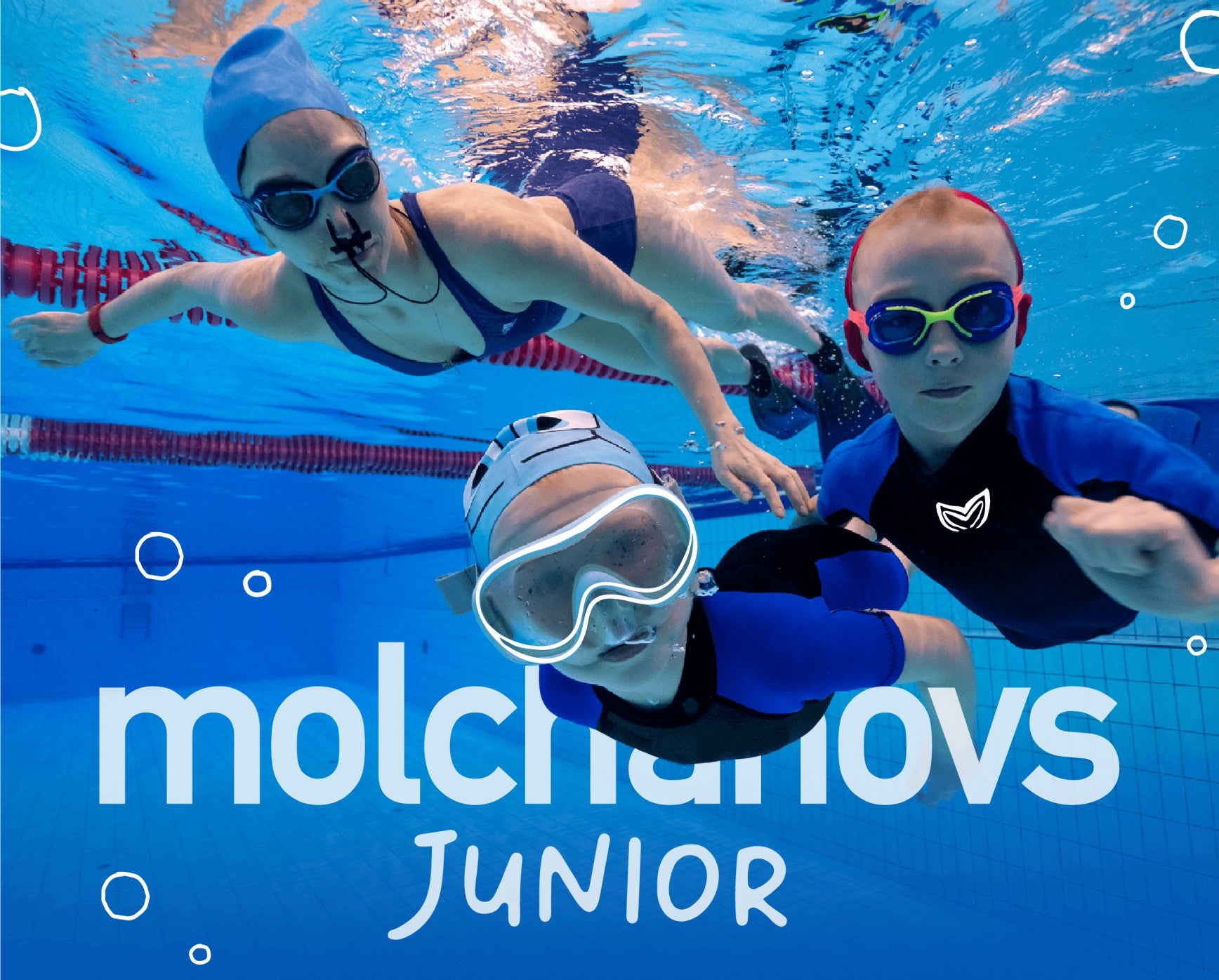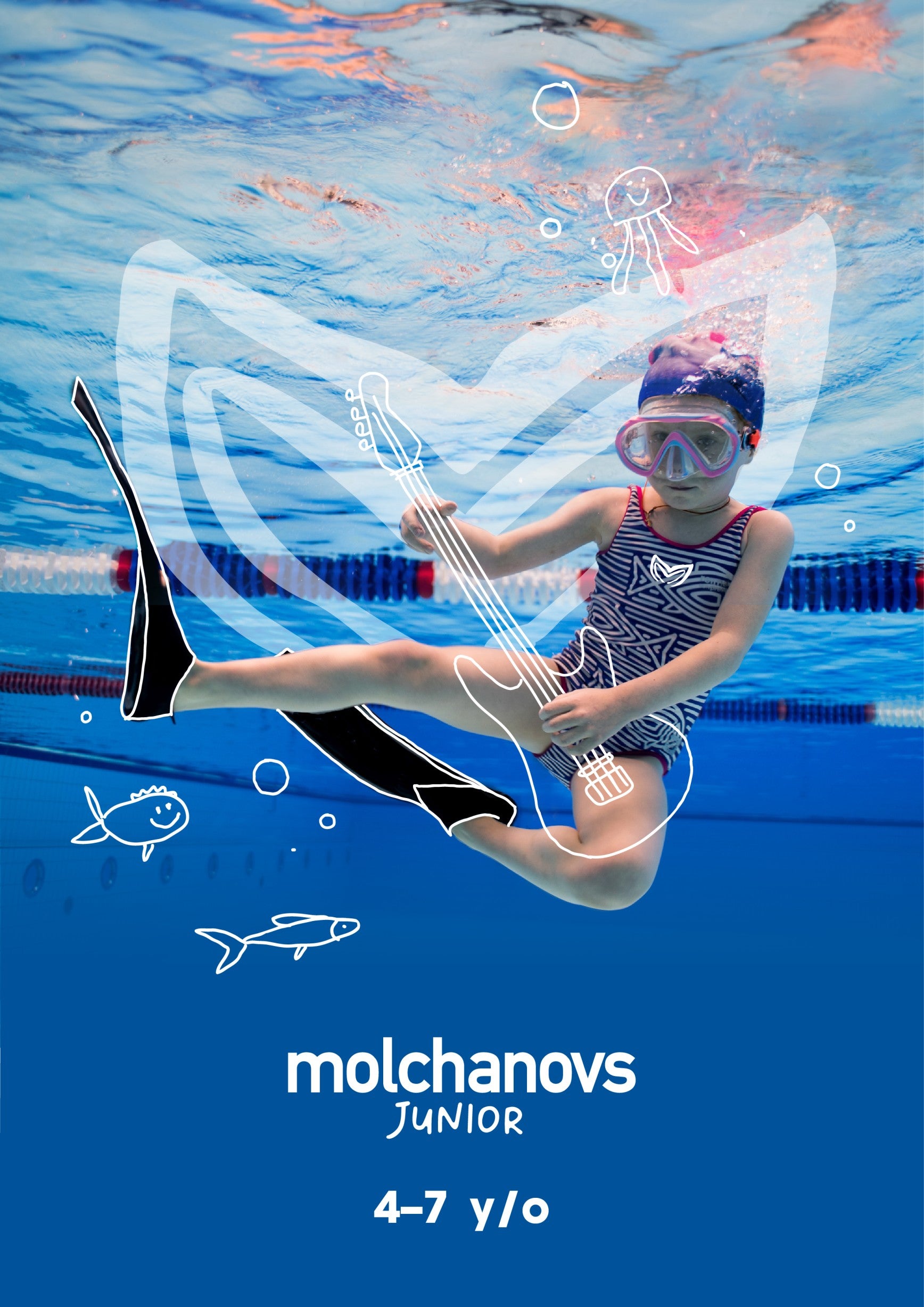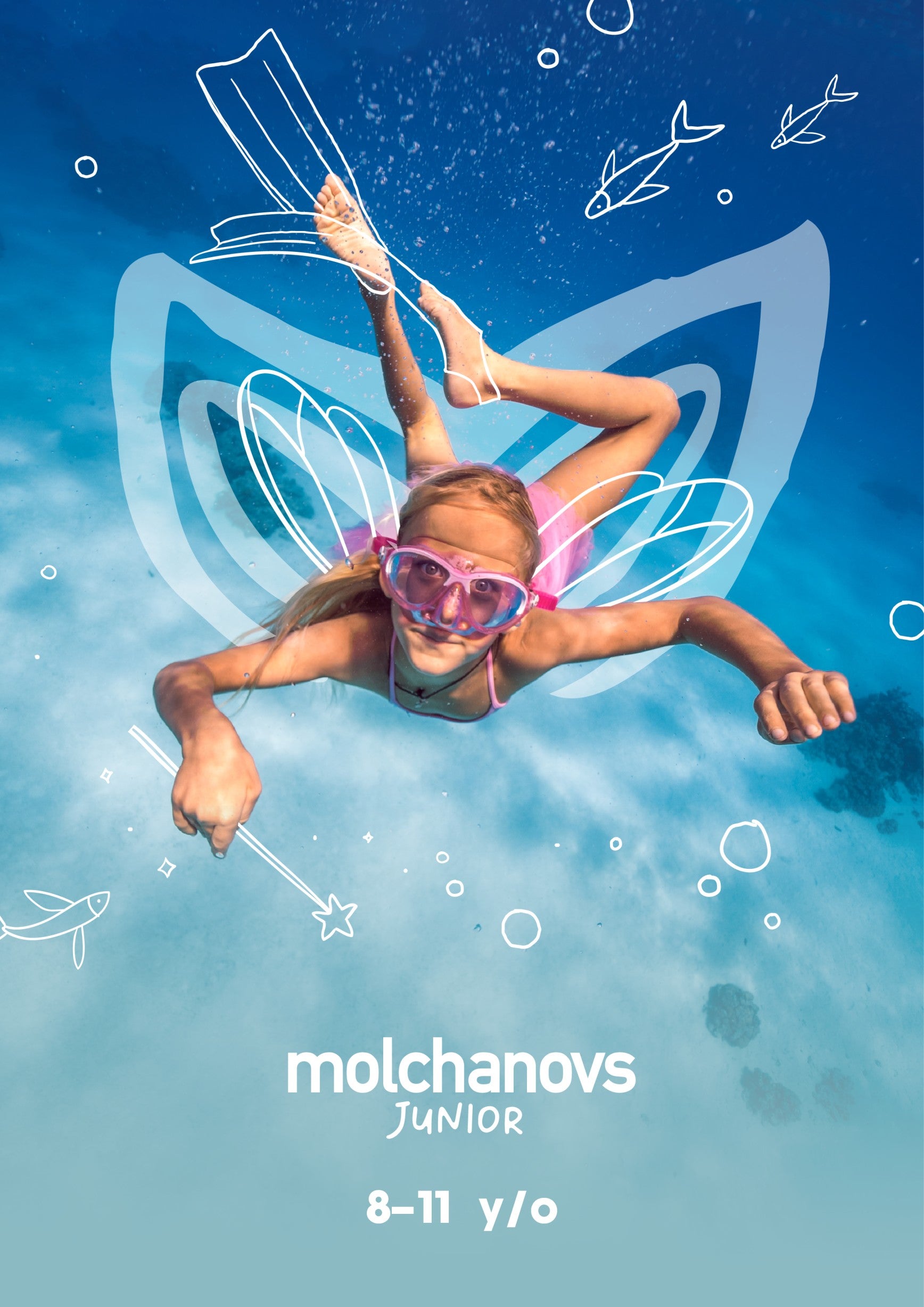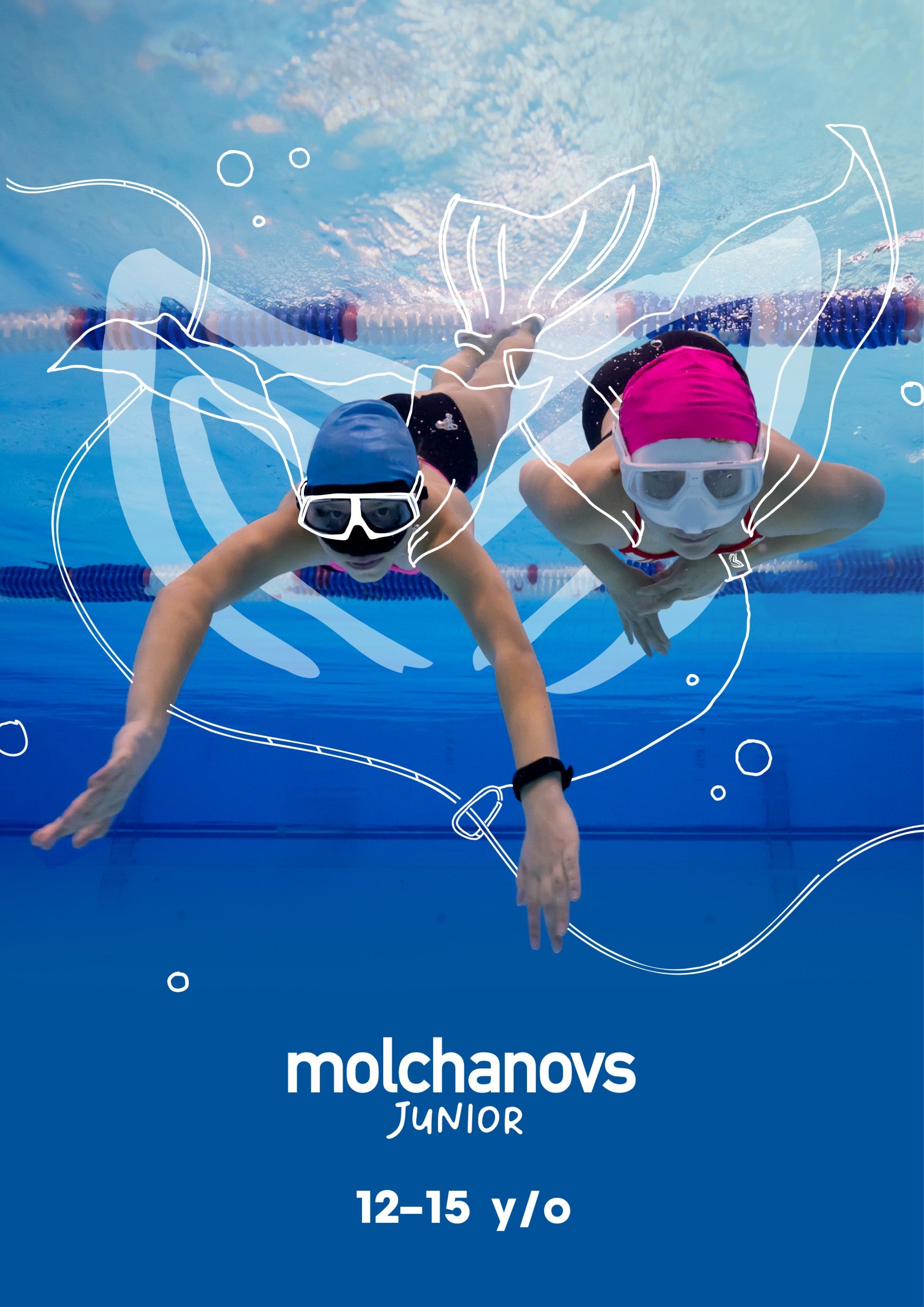Molchanovs Junior Freediving Education

What is Junior Freediving?
Junior Freediving involves children learning the sport of freediving while holding their breath in a comfortable zone. It is available for children ages 4 - 15. From 4 years old, children learn the basics of floating, swimming, and becoming comfortable in the water. As they get older and progress through each course, they learn the basics of all freediving disciplines, preparing them to become passionate adult freedivers if they choose!In the process of learning to swim and freedive, children not only learn practical skills in the technical aspects of diving - they also improve their health, become safer in water, and develop a healthy relationship with the ocean
Benefits
Children’s bodies are constantly developing, and freediving training can help them thrive in extraordinary ways - particularly their cardiovascular and respiratory systems!As children learn how to freedive, some of the natural outcomes include:
- Muscle gain
- Increased lung tissue elasticity
- Increased vital capacity
- Increased respiratory muscle strength
- Improved blood supply to the brain and heart
- Increased heart muscle strength
- Increased stroke volume
- Improved regulation of vascular tone and elasticity
- Increased oxygen absorption by the cells of the body
- Disease prevention
Features
In Junior Freediving courses, children start by learning basic swimming techniques. As they get older and advance through the levels, they start to learn freediving disciplines and train it as a sport.Practical tasks include:
- Learning basic swimming techniques
- Front crawl
- Backstroke
- Breaststroke
- Practicing how to move in water with and without fins
- Understanding and practicing the technical elements of freediving
- Duck dive
- Turns
- Breathing techniques before and after diving
- Training aerobic and anaerobic endurance
- Increasing resistance to hypercapnia and acidosis
What makes the Molchanovs Junior Freediving Education System different from other youth programs?
Extensive experience
The author of the Molchanovs Junior Freediving Education System, Dr. Olga Lukova, has over 12 years of experience conducting Junior freediving trainings in Russia. Joining her are a group of experienced Junior ITs who are both educators and athletes dedicated to providing high-quality training.Dedicated to Natalia’s philosophy
Natalia Molchanova, World Champion freediver and the inspiration for Molchanovs as an education system, always strived for safe and efficient freediving through education and training. Molchanovs is committed to her principles, which were the basis of the adult Lap/Wave Freediving courses. Those very same principles live on in the Junior Freediving Education System.Comprehensive courses
The Molchanovs Junior Freediving Education System consists of courses for each age group, which is further divided into multiple levels of pool and open water courses. This ensures children get a thorough education and experience in either body of water.Junior Freediving Education Structure

Junior (4 - 7 y/o)
Lap
Children slowly get comfortable floating in the water, surface swimming, and duck diving. As they get more proficient, they learn the front crawl and backstroke. Advanced students will experience STA/DYN/DYNB, all with very short and manageable breath-hold times and distances.
Junior 4 - 7 y/o Lap courses include:
- Discover Lap Freediving Experience
- Lap 1
- Lap 2
- Lap 3

Junior (8 - 11 y/o)
Lap
Children begin by learning some freediving theory and get comfortable at the surface with swimming techniques and STA/DYN/DYNB techniques. Later they learn equalization, breaststroke, and practice STA/DYN/DYNB. Advanced students will learn about sea mammals and human anatomy, how to turn in the pool, and DNF technique.
Junior 8 - 11 y/o Lap courses include:
- Discover Lap Freediving Experience
- Lap 1
- Lap 2
- Lap 3
Wave
Children begin by learning about freediving physics, along with swimming at the surface, duck diving, and FIM/CWTB techniques. Later, they discover equalization methods and how the human body works underwater, work further on FIM/CWTB, and learn CWT technique. Advanced students learn about sea mammals and more freediving theory, learn blackout rescue, and continue to slowly increase depth and work on FIM/CWT/CWTB techniques.
Junior 8 - 11 y/o Wave courses include:
- Discover Wave Freediving Experience
- Wave 1
- Wave 2
- Wave 3

Junior (12 - 15 y/o)
Lap
Children begin by learning freediving theory, equalization, the front crawl technique, and STA/DYN/DYNB technique. Later, they learn how to turn complete a pool turn, learn breaststroke and DNF technique, and improve their STA time. Advanced students learn about possible freediving injuries and training methods and slowly increase distances in all disciplines while working on technique.
Junior 12 - 15 y/o Lap courses include:
- Discover Lap Freediving Experience
- Lap 1
- Lap 2
- Lap 3
Wave
Children begin by learning freediving physics, surface swimming techniques, and FIM/CWT/CWTB techniques. Later, they learn about equalization techniques and human anatomy underwater, blackout rescue, experience CNF technique, and improve their FIM/CWT/CWTB performances. Advanced students will learn how to train in open water, understand equalization methods, and improve their FIM/CWT/CWTB/CNF techniques.
Junior 12 - 15 y/o Wave courses include:
- Discover Wave Freediving Experience
- Wave 1
- Wave 2
- Wave 3
